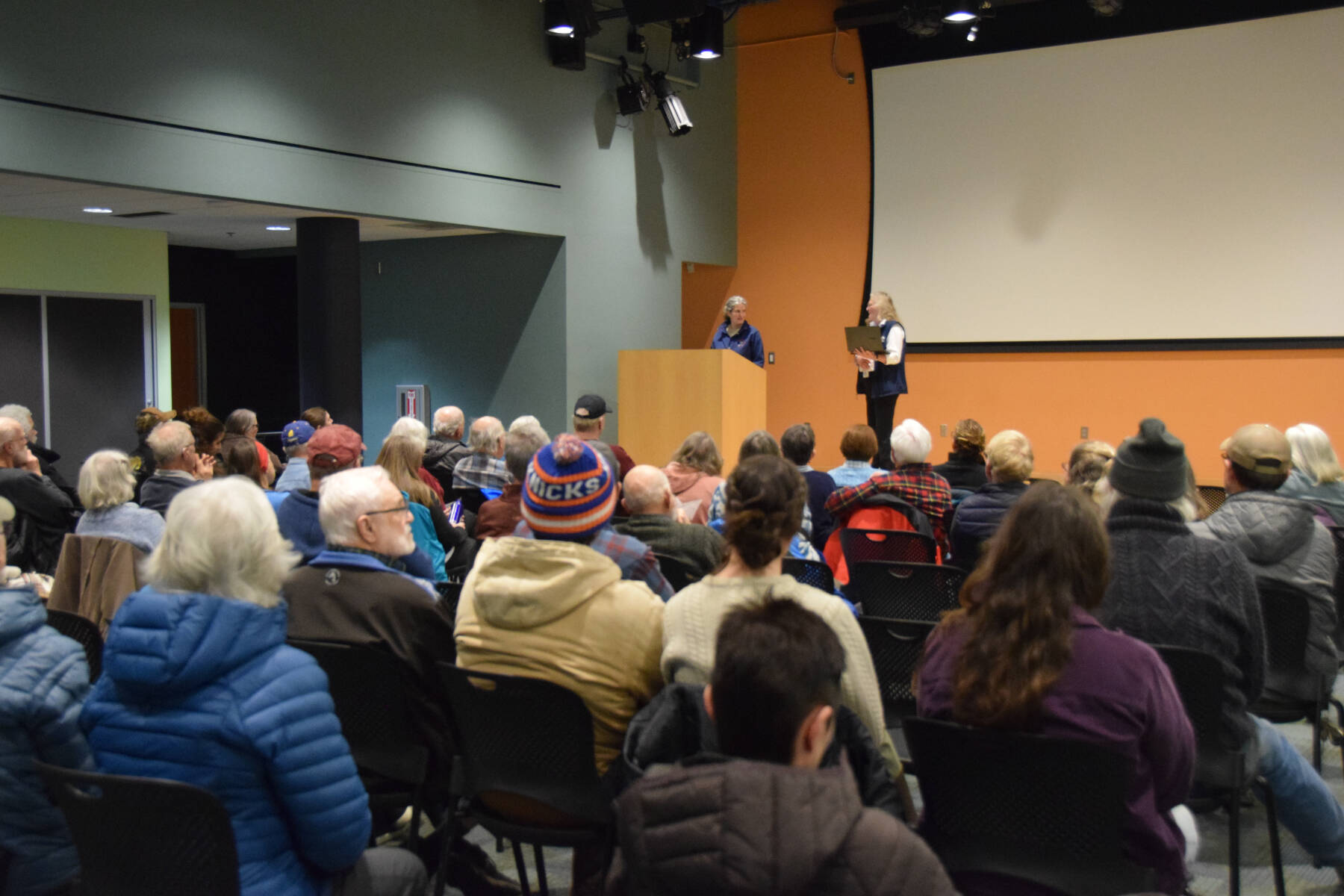The main conference room in the Alaska Maritime National Wildlife Refuge was filled with curious and concerned community members on Tuesday, Feb. 18. Attendees in person were joined by nearly 200 additional online participants at watch parties and Zoom streams spread across Alaska. The subject of the evening was unfortunate yet riveting: the millions of common murres who died of starvation en masse between 2014-2016. The reason for their starvation? A mass marine heat wave known simply as “the Blob” that decimated their food system from multiple angles.
Early numbers estimated the die-off to be between 500,000 and 1 million birds. Heather Renner, Alaska Maritime National Wildlife Refuge supervisory biologist, published research in December that shows true common murre mortality rates were closer to four times that number, at 4 million birds dead.
“We know that most birds that are lost at sea never make it to shore,” said Renner, during the presentation on Tuesday. “So, our ability to estimate a good number was poor.”
Renner said that murres tend to amass in one area during the breeding season. Being sea birds, it’s one of the only times they congregate on land.
Renner’s research into the common murre die-off went beyond examining the eight regular monitoring sites she is responsible for, pulling information from 13 common murre colonies across the Gulf of Alaska and the Bering Sea. Of those 13 colonies, Renner said five were part of other national wildlife refuges or state of Alaska sites.
While counting and studying murres during their breeding season, researchers noticed something else: the population was not bouncing back from the die-off in the way they had hoped for. Renner showed photographs of mating grounds where murre gathered in the years before the die-off and after. There were significantly fewer birds in the years after, and the population still hasn’t recovered as researchers had hoped.
Renner drove home the fact that this research was only able to be completed due to the wealth of data that they were able to reference about these birds, mainly due to monitoring programs that have been operating over the last 50 years.
“Counting birds is actually one thing that we do at Alaska Maritime National Wildlife Refuge. We’ve been counting birds on the same sections of cliff for 50 years, starting in the 1970s. By now, we have just a jewel of a 50-year data set at this refuge,” said Renner. “This data set is just one of the things I’m most proud of getting to help steward during my career.”
During questions, a community member asked about how AI and camera technology could perhaps help with bird counting going forward. The question specifically asked about “replacing staff” with the new technology.
Renner said that they already utilize cameras to help aid their data collection in places like the Barren Islands, but that it still takes a lot of time “back in the office” for them to then interpret that data. Identifying specific species and problems often requires specialized attention that cameras and AI could potentially struggle with. In the murre study, for example, the common murre examined is hard to differentiate from the thick-billed murre (a different species), making human knowledge, perception and experience in identifying these birds vital to proper analysis and counting.
When asked by a different community member if she expected to continue this season’s fieldwork — in light of the sweeping, rapid changes in federal funding implemented since President Donald Trump took office last month — Renner said that they continue to plan for a full season of data collection.
“Long-term data sets were critical for this study, and they turned out to be exceedingly rare worldwide. At Alaska Maritime Refuge, our network of annual monitoring sites is, I think, our most valuable jewel. We do everything we can to keep collecting data, but we’ve also learned that we need to work together. We just have our little piece of the puzzle, and we need to put them all together so that we can see what the picture really is.”
The next presentation of the Friends of Alaska National Wildlife Refuges is scheduled for March 18 at 5 p.m. at the Kenai National Wildlife Refuge. Matt Connor, the Kenai National Wildlife Refuge supervisory park ranger and a personal trainer, will present “Built like a Bear, Mosey like a Moose: Your Health and Alaska’s Wildlife Refuges.”
You can find more information about the event and the work of the Friends online at alaskarefugefriends.org. A full recording of Tuesday’s presentation is also available on their website.
Chloe Pleznac can be reached by email at chloe.pleznac@homernews.com.

